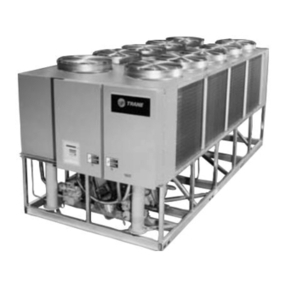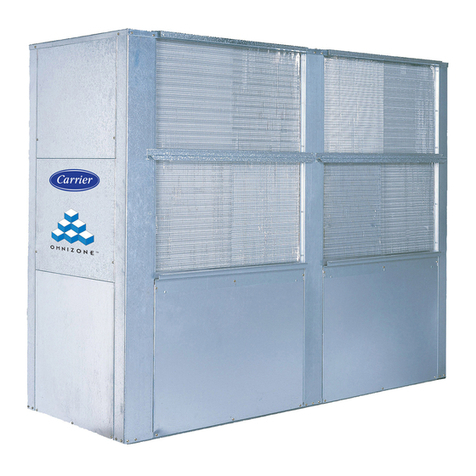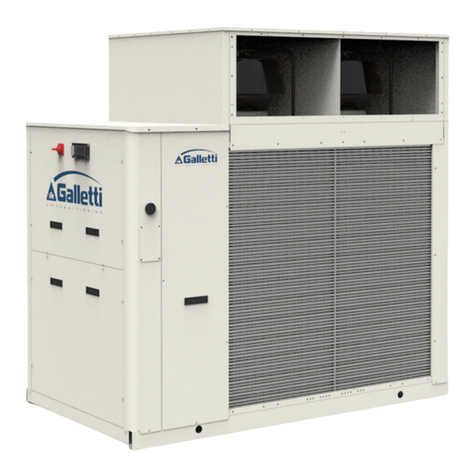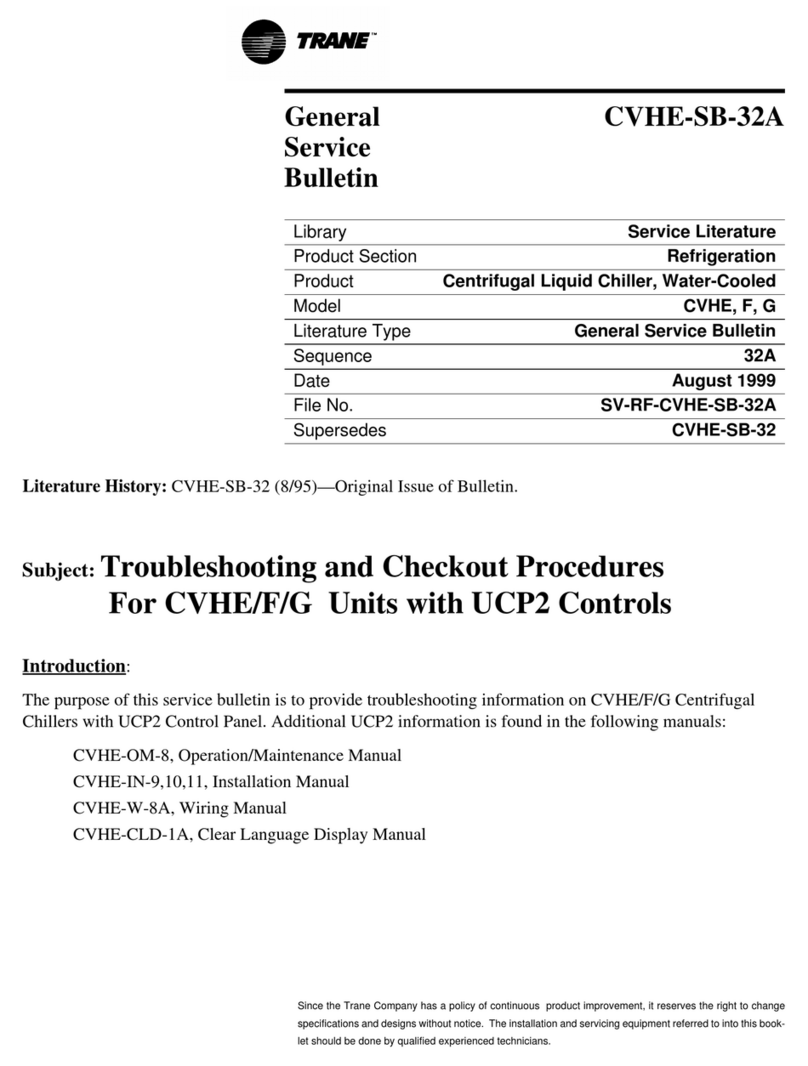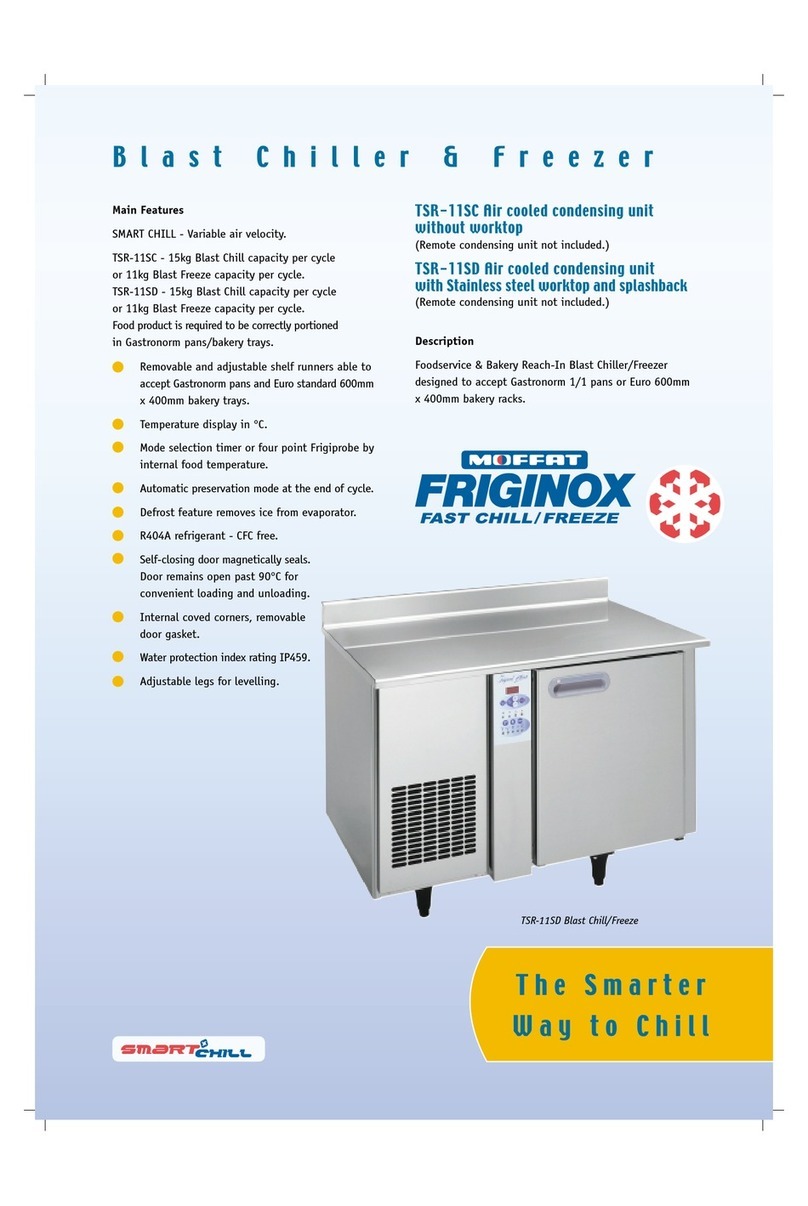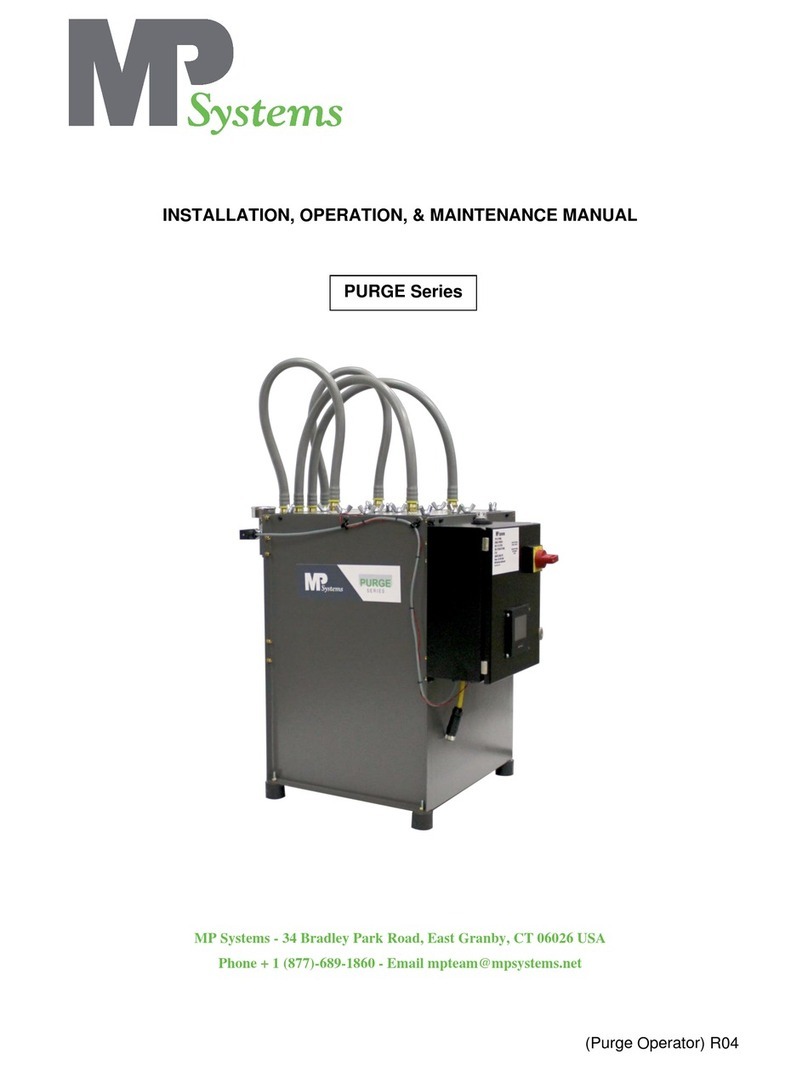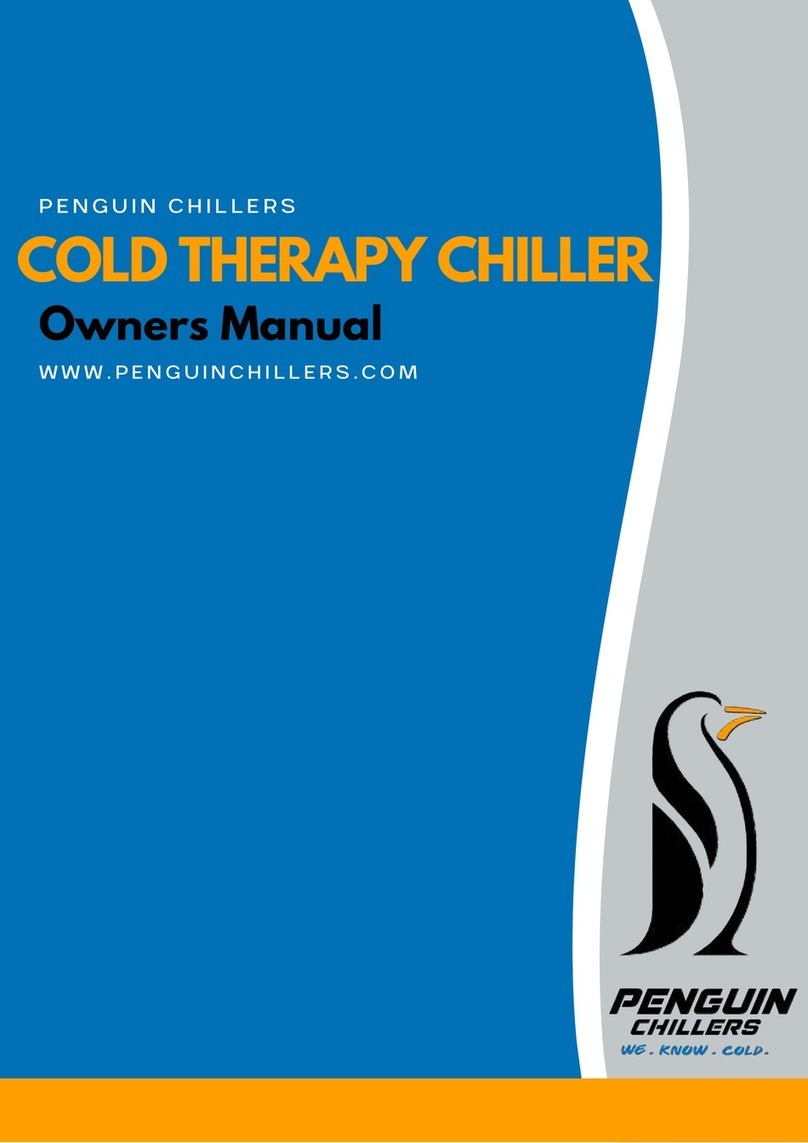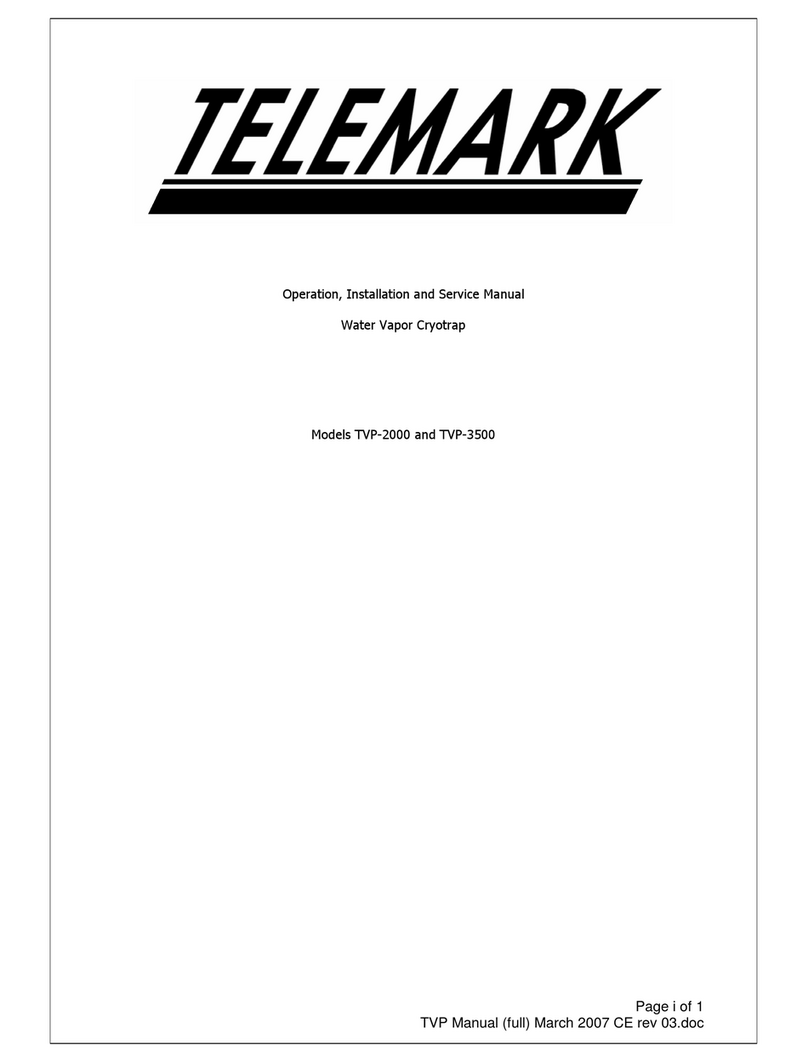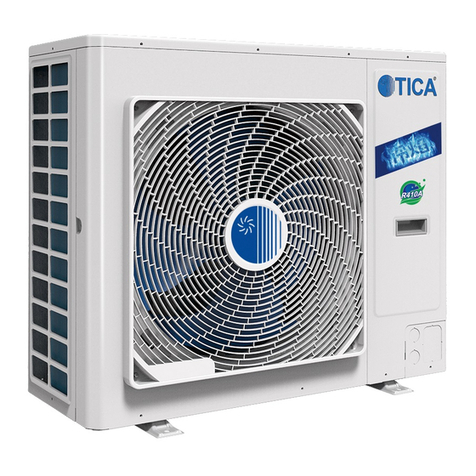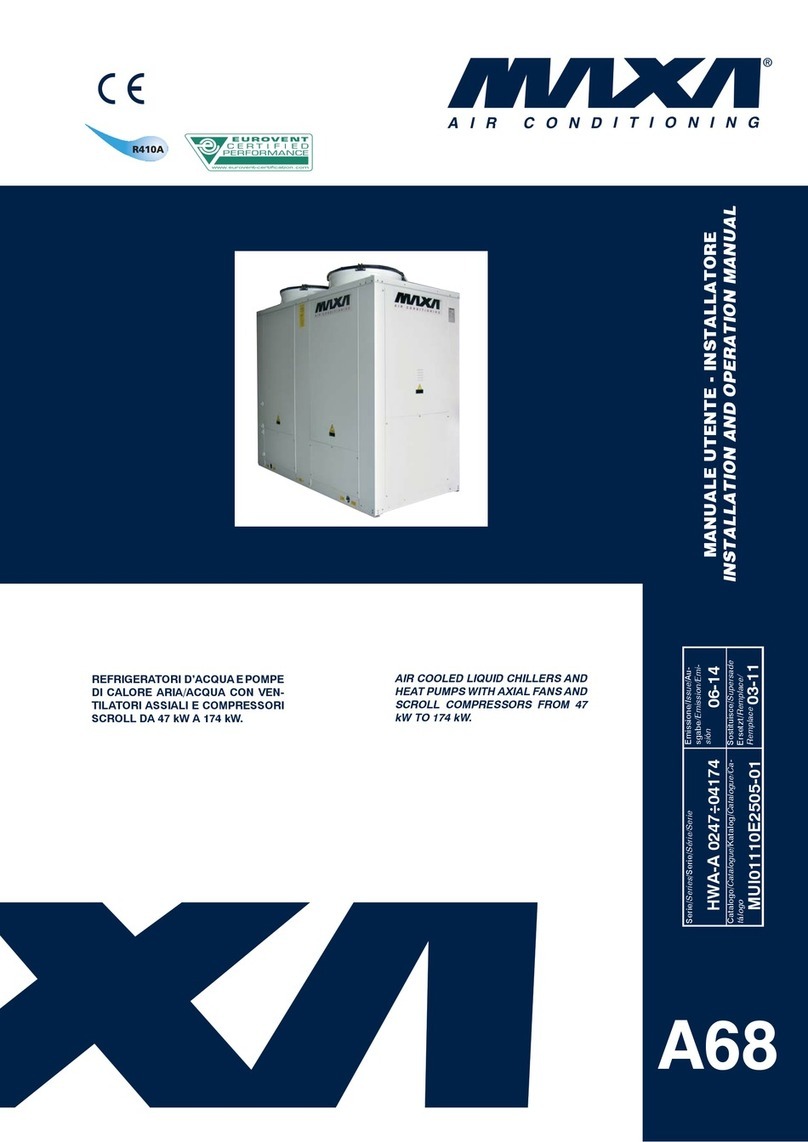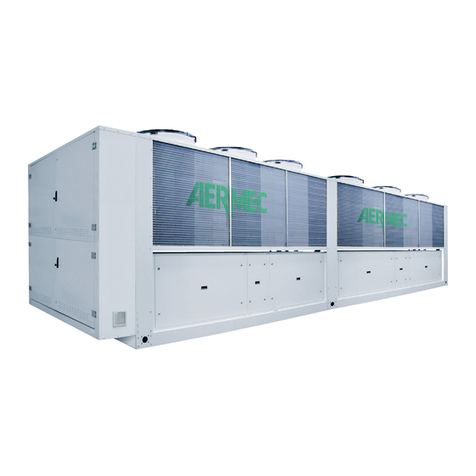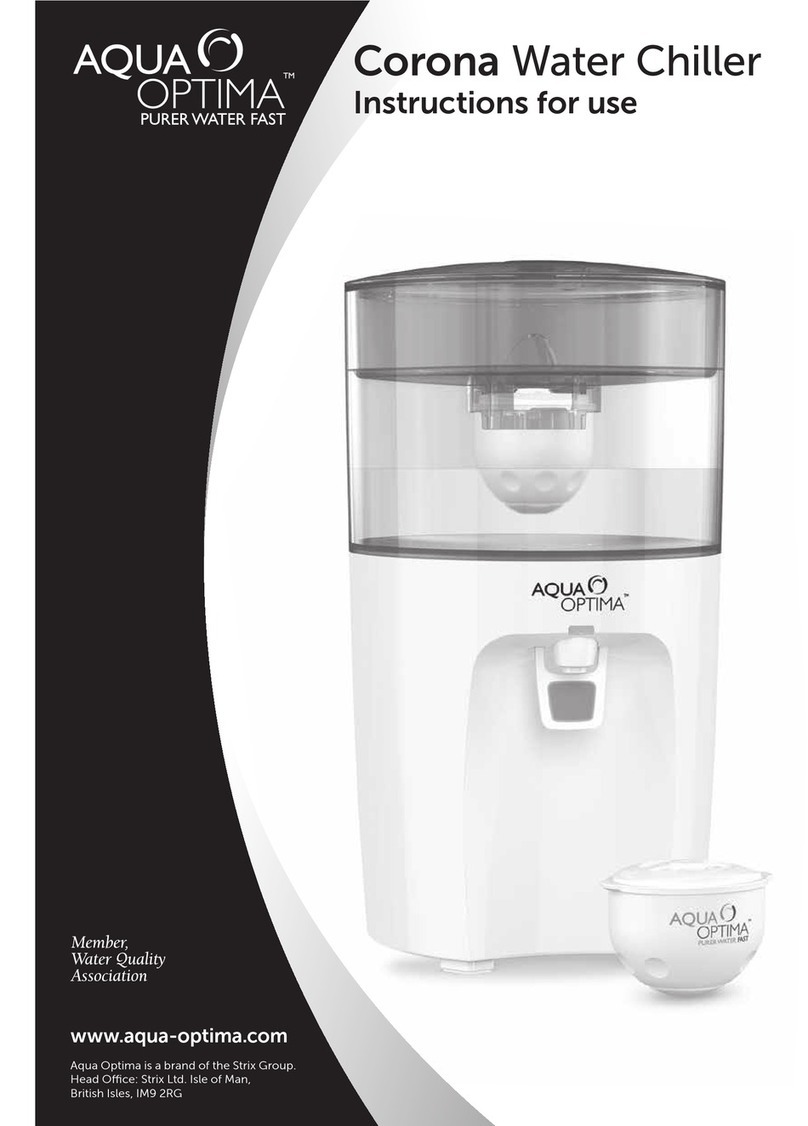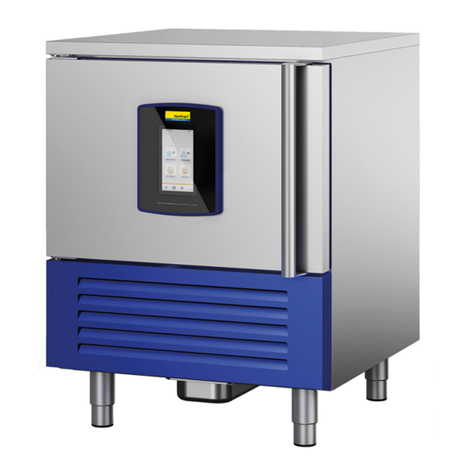
2
TABLE OF CONTENTS
1. GENERAL USER AND MAINTENANCE MANUAL ......................................................................3
1.1. HOW TOUSE THIS MANUAL................................................................................................3
1.2. GENERAL DESCRIPTIONS/INTENDED USE ............................................................................3
2. GENERAL SAFETY INSTRUCTIONS........................................................................................3
3. DESCRIPTION OF THE CHILLER, COMPONENTS AND OPTIONS.............................................5
3.1 DESCRIPTION...................................................................................................................5
3.2 REFRIGERANT CIRCUIT......................................................................................................5
3.2.1 STANDARDCOMPONENTS USED IN THE CHILLER..............................................................................5
3.2.2 OPTIONS REFRIGERATION CIRCUIT ..............................................................................................6
3.3 COOLING MEDIUM CIRCUIT (CONSUMERCIRCUIT) ...............................................................6
3.3.1 STANDARDCOMPONENTS USED IN THE CHILLER..............................................................................6
3.3.2 OPTIONS HYDRAULIC CIRCUIT.....................................................................................................7
3.3.3 SINGLE-CIRCUIT SYSTEM WITH TANK (STANDARD)...........................................................................7
3.3.4 SINGLE-CIRCUIT SYSTEM WITHOUT TANK........................................................................................8
3.4 ELECTRIC CIRCUIT............................................................................................................8
3.4.1 STANDARDCOMPONENTS USED IN THE CHILLER..............................................................................8
3.4.2 OPTIONS ELECTRIC CIRCUIT........................................................................................................9
3.5 HOUSING .........................................................................................................................9
4. TRANSPORT/ PACKAGING/ STORAGE................................................................................11
4.1 REMOVING THE PACKAGING AND HANDLINGTHE CHILLER .................................................. 11
4.2 DISPOSALOF PACKAGINGMATERIALS............................................................................... 11
4.3 STORAGE ....................................................................................................................... 11
5. LOCATION AND INSTALLATION .........................................................................................12
5.1 CHOOSING A LOCATION................................................................................................... 12
5.2 ASSEMBLY (CONNECTIONS) .............................................................................................13
5.2.1 CONNECTIONTO THE REFRIGERANTCIRCUIT (CONSUMER CIRCUIT) ................................................13
5.2.2 CONNECTIONTO THE ELECTRICITY MAINS.....................................................................................14
6. OPERATION........................................................................................................................15
6.1 CHECK LIST FORTHE INITIAL START-UP OF WATERRECIRCULATING CHILLERS..................... 15
6.1.1 WATER REQUIREMENTS................................................................................................................15
6.1.2 CHECKLIST FOR PCGE11 TO PCGE 3300........................................................................................15
6.2 CHECKLIST FOR STARTING UP OIL RECIRCULATINGCHILLERS............................................. 17
6.2.1 OIL REQUIREMENTS.....................................................................................................................17
6.2.2 CHECKLISTE FOR OCGE 31 TO OCGE240.......................................................................................17
6.3 CHECK LIST FORCOMMISSIONING GLYCOL RECIRCULATING CHILLERS ................................18
6.3.1 REQUIREMENTS FOR THE WATER-GLYCOLMIXTURE........................................................................18
6.3.2 CHECKLIST FOR PCGEZ 08 TO PCGEZ480......................................................................................18
6.4 OPERATINGSETTINGS FOR THE ELECTRONIC CONTROLLER................................................. 20
6.4.1 CONTROLLER TYPE ”AÜ(PCGE11 TO PCGE 28; PCGEZ 08) ...............................................................21
6.4.2 CONTROLLER TYPE ”BÜ(PCGE31 TO PCGE 520; OCGE 31 TO OCGE240; PCGEZ37 TO PCGEZ 180) ....22
6.4.3 CONTROLLER TYPE ”CÜ(PCGE590 TO PCGE 3300;PCGEZ240 TO PCGEZ480)...................................22
6.5 SHUTTING DOWNTHE CHILLER ........................................................................................ 23
6.5.1 SWITCHINGON/OFF IN DAILYOPERATION.....................................................................................23
6.5.2 TEMPORARY DECOMMISSIONING ..................................................................................................24
6.5.3 DECOMMISSIONINGFOR TRANSPORT PURPOSES............................................................................24
7. MAINTENANCE ...................................................................................................................24
7.1 MAINTENANCE OPERATIONS.............................................................................................24
7.2 DAILY RECORD ............................................................................................................... 25
8. DISPOSAL ..........................................................................................................................26
9. MALFUNCTIONS/TROUBLESHOOTING................................................................................26
9.1 POSSIBLE ALARM SIGNALS AND THEIR RECTIFICATION....................................................... 27
9.1.1 CONTROLLER TYPE ”AÜ(PCGE11 TO PCGE 28; PCGEZ 08) ...............................................................27
9.1.2 CONTROLLER TYPE ”BÜ(PCGE31 TO PCGE 520; OCGE 31 TO OCGE240; PCGEZ 37 TO PCGEZ 180) .....28
9.1.3 CONTROLLER TYPE ”CÜ(PCGE590 TO PCGE 3300;PCGEZ240 TO PCGEZ480)...................................30
10. FEATURES AND TECHNICAL DATA ......................................................................................64
10.1 TECHNICAL FEATURES..................................................................................................... 64
10.2 PUMP AND TANK CHARACTERISTICS.................................................................................. 65
10.3 COMPONENTS WITH A WEIGHT OF MORE THAN20 KG......................................................... 66
11. DIAGRAMS .........................................................................................................................67
11.1 LEGEND ......................................................................................................................... 67
11.2 WIRING DIAGRAM........................................................................................................... 69
11.3 COOLING HYDRAULIC DIAGRAM..................................................................................... 82
12. REGULATION ON PRESSURE EQUIPMENT...........................................................................93
13. DECLARATION OF CONFORMITY.........................................................................................94
14. PROGRAMMED MAINTENANCE REGISTER.........................................................................945
15. INDIVIDUAL SPECIFICATION...........................................................................................956
